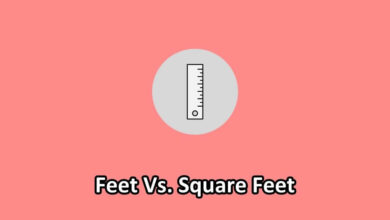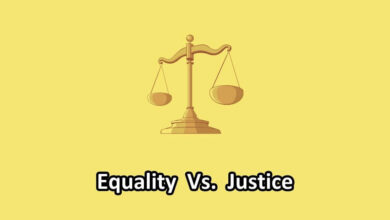Are you a lover of the great outdoors, seeking adventure in breathtaking landscapes? If so, you’ve probably heard the terms “hiking” and “trekking” thrown around. But what really sets these two activities apart? Are they just different names for the same thing or do they offer unique experiences? Join us as we unravel the great debate between hiking vs trekking, exploring their defining characteristics, thrill factors, and everything else that makes them truly distinct. Get ready to lace up your boots and embark on an exhilarating journey through nature like never before!
Hiking Vs Trekking (Comparison Table)
| Hiking | Trekking |
|---|---|
| Hiking typically refers to a one-day outdoor activity where you walk on trails or paths. | Trekking Involves multi-day journeys on foot, often through varying terrains, and might include camping overnight. |
| It involves shorter distances and can be completed within a day. | It involves longer distances that often span multiple days, requiring more planning and preparation. |
| Hiking requires basic equipment like comfortable shoes, water bottles, and snacks. | Trekking requires more technical gear such as backpacks, sleeping bags, tents, stoves for cooking, and navigation tools like maps or compasses. |
| Hiking may not or may be generally easier due to shorter distances and less technical terrain. | Trekking is typically more physically demanding due to longer distances, varied terrain, and potential challenges like weather changes. |
| It requires a reasonable level of fitness. | It demands a higher fitness level due to the extended durations, heavier loads, and potentially rugged terrain. |
| Hiking is usually a low-risk activity, often done on well-marked trails. | Trekking may involve higher risks due to spending more time in remote or challenging environments with less immediate access to help. |
| Hiking is mainly undertaken in lowland areas and established trails. | Trekking can be pursued in any type of terrain, ranging from mountainous paths to desert landscapes. |
| It is typically completed in a single day. | It can span multiple days, requiring careful planning for accommodations, food, and other necessities. |
What is Hiking?
Hiking is an outdoor activity that involves walking in natural environments, such as mountains, forests, and parks. It is typically done for exercise and recreation, but can also be used as a means of transportation. Hiking can range from a leisurely stroll to a strenuous trek across difficult terrain.
What is Trekking?
Trekking, on the other hand, is a more serious form of walking, usually undertaken on longer trails over multiple days. It often requires an overnight stay and/or camping outdoors and can involve activities such as rock climbing, river crossing, and even summiting a mountain.
Trekking is a great way to explore remote parts of the world that are rarely visited by tourists and experience nature at its best.
Benefits of Hiking and Trekking
- Improves Your Mental Health: Hiking and trekking can help to reduce stress, anxiety, and depression. The repetitive movement of walking helps to relax the mind and distract from negative thoughts.
- Boosts Cardiovascular Health: Hiking and trekking are great physical activities that get your heart pumping and blood flowing. The constant motion keeps your body active and helps strengthen your heart muscle, lowers cholesterol levels, maintains healthy blood pressure, and reduces the risk of a stroke or heart attack.
- Strengthens Your Muscles: Trekking up hills or mountains can give you a full-body workout as it requires the use of many muscles.
- Improves Balance: The uneven terrain while hiking or trekking can help improve balance by forcing you to adjust your steps accordingly while also engaging more muscles in order to keep steady on your feet.
- Better Overall Fitness: The physical activity from hiking and trekking can help you achieve better overall fitness. It is a great way to stay fit and also enjoy the outdoors.
- Helps You Connect With Nature: Hiking and trekking give you an opportunity to reconnect with nature and appreciate the beauty of our environment. By being in close proximity to plants, animals, and natural landscapes, your senses are heightened while also allowing you to take time out from everyday life to relax, reflect and absorb nature’s bounty.
Key Differences Between Hiking and Trekking
- Necessary Equipment: Hiking usually requires basic equipment like comfortable shoes, water bottles, snacks, etc., while trekking usually requires more technical gear such as backpacks, sleeping bags, tents, stoves for cooking, and other items such as maps or compasses.
- Level of Difficulty: Hiking is generally an easier activity than trekking because of the shorter distances involved and the lack of need for advanced equipment or navigation skills. Trekking often requires more physical exertion and can be much more challenging in terms of terrain and weather conditions.
- Fitness Requirement: Hiking generally requires a good level of fitness, while trekking requires a higher level of fitness due to the longer distances, increased carrying weight, and potential for rougher terrain.
Safety Tips for Hikers and Trekkers
Hiking and trekking are both popular outdoor activities that offer a great way to explore the outdoors and get some exercise. However, there are some important safety considerations to keep in mind when hiking or trekking. Here are five safety tips for hikers and trekkers:
- Tell someone where you’re going. Before heading out on a hike or trek, let someone know your planned route and expected return time. This way, if something happens and you don’t return as expected, someone will know where to start looking for you.
- Stay on Marked Trails. Wandering off-trail can be dangerous, especially in unfamiliar territory. It’s important to stay on designated trails to avoid getting lost or injured.
- Don’t Hike Alone. It’s always best to hike with at least one other person in case of an emergency. If you must hike alone, make sure you let someone know your plans and leave them a copy of your itinerary.
- Be Prepared for Bad Weather. Check the forecast before heading out and be prepared for inclement weather conditions. Bring appropriate clothing and gear for the conditions, and be aware of the dangers of exposure to extreme cold or heat.
- Know Your Limits. Don’t push yourself too hard while hiking or trekking – know your physical limitations and take breaks as needed.
Which Is Harder: Hiking Or Trekking?
It is often said that hiking is simply walking, while trekking is a more strenuous form of walking that includes carrying supplies. While this may be true to some extent, there are actually several key differences between the two activities. Here’s a brief explanation of each:
- Hiking: Hiking is typically done on well-established trails and usually doesn’t involve any major scrambling or Grade II+ terrain. The focus is usually on enjoying the scenery and getting some exercise, rather than reaching a specific destination. Hikes can be day-long outings or multi-day backpacking trips.
- Trekking: Trekking generally refers to longer journeys through more difficult terrain, often involving off-trail travel, bushwhacking, and occasional scrambling or climbing. The goal is usually to reach a specific destination, such as a summit or remote lake. Trekking can be done in a self-supported style (carrying all your own gear) or with the help of pack animals.
Conclusion
Hiking and trekking are both great ways to get outside and explore nature, but they each have their own unique challenges and rewards. Whether you prefer hiking or trekking will depend on your goals, fitness level, gear availability, and the terrain you’re exploring. With careful planning, either pursuit can be a fulfilling outdoor activity that allows you to enjoy the beauty of nature on your terms.



